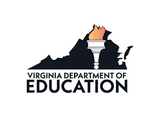
This science instructional plan (SIP) supports the Science Standards of Learning.
- Subject:
- Earth Resources
- Material Type:
- Lesson
- Lesson Plan
- Author:
- Myra Thayer
- Anne Petersen
- Gregory MacDougall
- Date Added:
- 01/28/2021

This science instructional plan (SIP) supports the Science Standards of Learning.
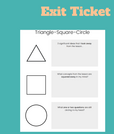
This strategy is an engaging and effective way to get students into reflection practice. It can be adapted to multiple grade levels and formats. Reflection is an important strategy for students to acquire as it helps them retain information. This exit ticket can also serve as an effective formatve assessment.

This lesson will allow students to analyze the physical and ecological processes which shape the Earth’s surface including the nature and location of weather phenomena and what causes the seasons and climate. Students will also use a decision-making model. Teachers will need to make copies of all the Google forms and documents.

Demonstrate how to draw a landscape outline using foreground, middle ground and background. Tell the students that they will need to choose two different VA landscapes to draw including details and color.Draw an outline in pencil of the first regional landscape of your choice.Discuss colored pencil techniques. When coloring in your drawings, use several different colors and shades of a color as well as how to vary the pressure on your pencil to add depth to your drawing. Have students pass out supplies.Students write what two regions of their choice on the back of their first landscape drawing. Students work independently on their first landscape.

The purpose of this lesson is to showcase the contributions of artists of the Renaissance. Students will differentiate between art produced during the medieval period and the Renaissance period. They will research to learn about Renaissance figures and create an art show for an artist which they will present to the class.

The Renaissance is known as a rebirth of culture that began on the Italian Peninsula. Many crusades had their points of departure from this region. The interaction with the Middle East resulted in increased trade and diffusion of ideas. Students identify the benefits of geographic location for the northern Italian city-states in terms of their local conditions (site) and the developing trade connections throughout Europe and the Middle East (situation). Key questions: How did land and sea routes connect people and places? How does location influence the ability to interact with the rest of the world?
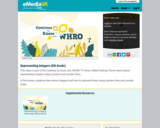
This video is part of the Continue to Know with WHRO TV series. Watch Kathryn Turner teach about representing integers using counters and number lines.

This table shows the attitudes of U.S. citizens' willingness to give up civil liberties to curb terrorism from 1996-2007. It has been consistent that the majority of respondents consistently responded against giving up civil liberties with the exception of 2001-2002 which is probably correlated with the 9/11 incident.
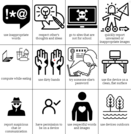
Setting and maintaining expectations is an essential indicator of future student success at all grade levels. At the start of each school year, classes review citizenship skills to get reacclimated to the school and the classroom environment. Help students set a strong foundation for their digital lives by teaching digital citizenship and face-to-face skills. In doing so, students will be equipped with tips for safety and success no matter their setting.
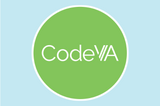
Students will build a program to retell a story. Students will include sequencing and debugging, abstraction, patterns, loops, and decomposition skills to effectively tell the story events and include essential story elements.These materials were created by CodeVA in partnership with George Mason University and were funded by the National Science Foundation under Grant Award #1837380
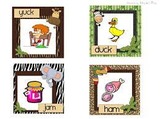
Rhyming Time is a cross-curricular lesson designed by an Elementary Librarian to support Math instruction. Created By: Kelly Terry, Powhatan County Public Schools.
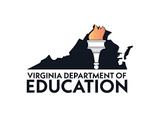
Lesson to support the Computer Science Standards of Learning.
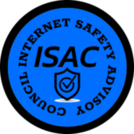
Helps middle school and high school youth identify the media's messages related to dating and relationships so that they can develop their own ideas and values and choose healthy relationship behaviors.
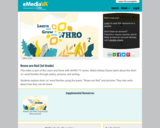
This video is part of the Learn and Grow with WHRO TV series. Watch Kelsey Eanes teach about the short /e/ word families through poetry, pictures, and writing.
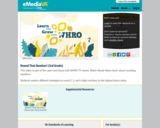
This video is part of the Learn and Grow with WHRO TV series. Watch Nicole Neice teach about rounding numbers.
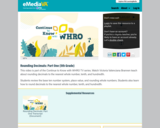
This video is part of the Continue to Know with WHRO TV series. Watch Victoria Valenciana Brannen teach about rounding decimals to the nearest whole number, tenth, and hundredth.
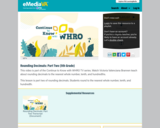
This video is part of the Continue to Know with WHRO TV series. Watch Victoria Valenciana Brannen teach about rounding decimals to the nearest whole number, tenth, and hundredths.
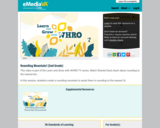
This video is part of the Learn and Grow with WHRO TV series. Watch Shantel Davis teach about rounding to the nearest ten.
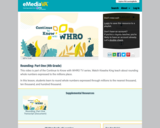
This video is part of the Continue to Know with WHRO TV series. Watch Kieasha King teach about rounding whole numbers expressed to the millions place.
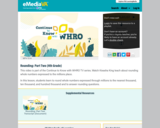
This video is part of the Continue to Know with WHRO TV series. Watch Kieasha King teach about rounding whole numbers expressed to the millions place.